Common Orthodontic Issues – Plano, TX
When to Seek Professional Care

Dr. Tamara Jones at Willow Bend Orthodontics of Plano has been helping patients enjoy straighter smiles for years now. Although she is an expert when it comes to treating problems of overcrowding, gapped or crooked teeth, or misaligned bites, she understands it may not always be easy for you or your child to recognize the signs of a serious problem. As a trusted orthodontist in Plano, she and her team can help you determine when it’s time to seek professional help for a common orthodontic issue. If you suspect there to be a problem developing with your smile or your child’s, don’t hesitate to contact our office to schedule an appointment. We’ll be happy to see you!
Overcrowding
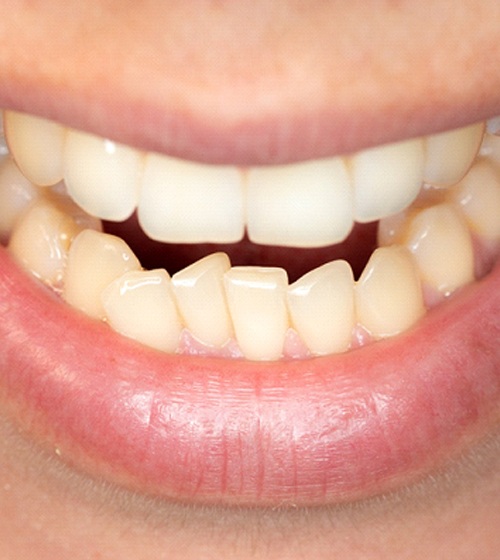
When teeth are situated too close to one another, this can pose a significant problem, especially as it pertains to your oral health. Brushing and flossing may become increasingly difficult, as cleaning all surfaces and in-between teeth are simply not possible. To avoid increasing your risk for tooth decay or gum disease, orthodontic treatment can move your teeth in a way that creates necessary spaces and allows for proper cleaning moving forward. If you’d like to learn more about overcrowding and how to address it, continue reading!
What is Dental Crowding?
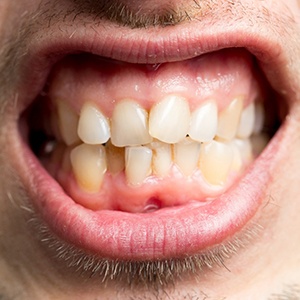
Overcrowding happens the teeth are competing for space in the mouth and has grown in improperly. Ideally, your pearly whites should come in with the correct amount of space around them. If that doesn’t occur, your teeth could become twisted and misaligned. It’s incredibly important to treat dental crowding as soon as possible to prevent issues down the line, like tooth decay.
What Causes Dental Crowding?
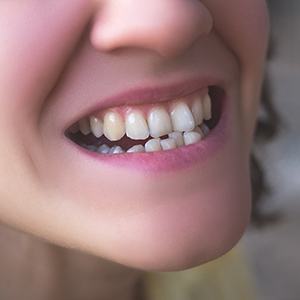
Several factors can lead to dental crowding. In many cases, genetics is the main culprit. You could inherit a small jaw, which can negatively impact the way the teeth grow in. A few other elements that can cause overcrowding include:
- Losing baby teeth prematurely
- Extra adult teeth
- Abnormal tooth growth
- Unusually large teeth caused by certain syndromes
What Are the Signs of Dental Crowding?

It can be hard to tell if you or your child’s teeth are crowded. Here are a few signs to look out for that can indicate dental crowding:
- Tooth discomfort when biting
- Crooked teeth at unnatural angles in your mouth
- Teeth overlapping each other
- Crossbite
- Excessive overjet
- Jaw pain
- Trouble biting or chewing
- Difficulty brushing and flossing
- Bleeding gums when flossing
Is Crowding Bad for Your Teeth?

Yes! Overcrowding must be addressed right away. Otherwise, it can cause lasting problems for your teeth, gums, mouth, and overall health. The most significant issue that can result from dental crowding is poor oral hygiene, primarily because overlapping teeth are harder to clean properly. If you’re not taking care of your smile, it can lead to increased bacterial growth and plaque build-up.
The best way to avoid these issues is by seeking treatment for dental crowding as soon as possible. The American Association of Orthodontists recommends bringing children to see an orthodontist beginning at seven years old. Even though they may not start treatment immediately, they will monitor the growth pattern of your teeth to determine if early preventive measures are necessary.
How is Dental Crowding Treated?
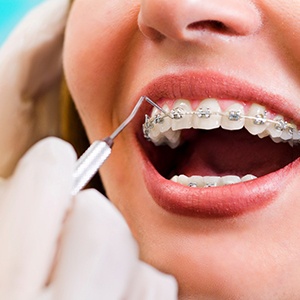
Dental crowding can lead to serious health consequences if left untreated. But don’t worry – a licensed orthodontist is able to easily address crowded teeth! Depending on your case, they may recommend one of the following treatment options:
- Braces – Traditional, ceramic, and lingual braces can all help straighten your teeth.
- Invisalign – These clear aligners are extremely effective at correcting crowding.
- Extraction – When teeth are extremely crowded, it is sometimes necessary to have certain teeth extracted.
Gapped Teeth
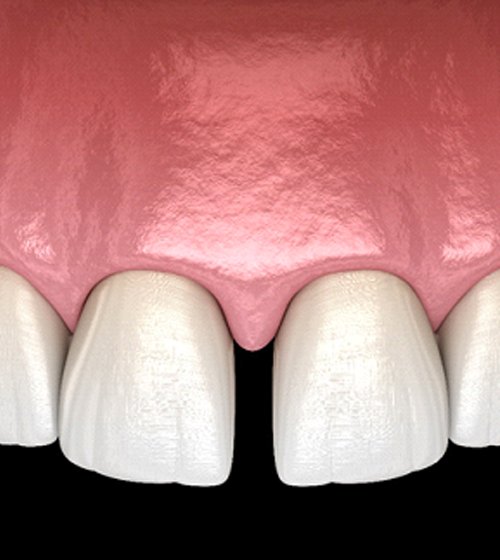
Spaces between teeth may seem “cute” or “adorable” when you’re young, but as you grow older, these unwanted gaps can be troublesome. Not only can harmful bacteria and food particles become trapped, but you can be at risk for tooth decay, cavities, gum disease, and receding gums. But by seeking the help of an orthodontist near me, you can begin treatment with braces and watch these unnecessary gaps begin to close over time. As a result, you’ll be left with a more pleasing aesthetic and healthier smile.
Overbite
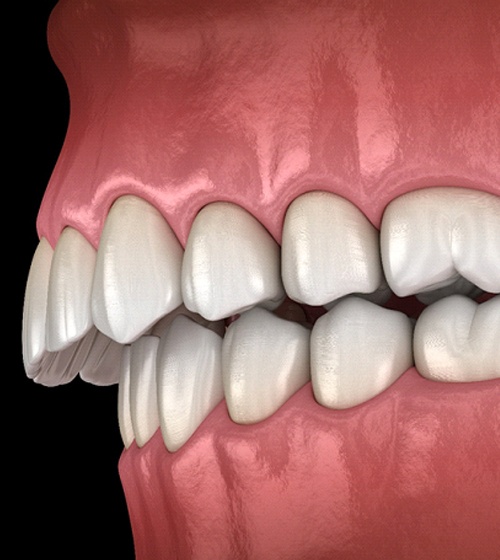
Should you notice that your top teeth stick out much further than your bottom teeth, it’s time to seek professional care for your overbite. Although it is natural for your upper teeth to protrude slightly, having them extend too far can cause your tooth enamel to wear down more quickly each time you close your mouth. Fortunately, braces can realign your smile and move your bite into proper alignment, allowing your teeth to work harmoniously moving forward.
Underbite
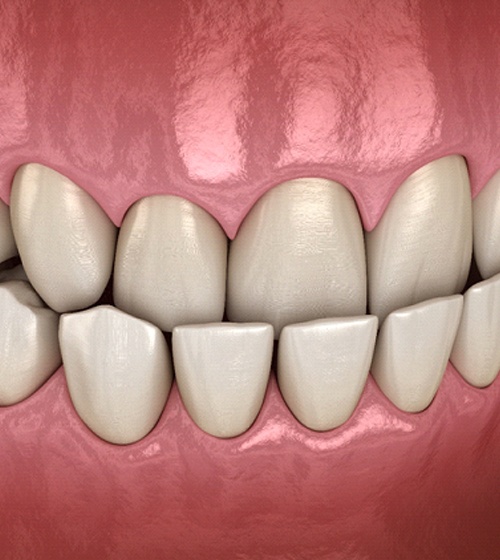
Unlike an overbite that focuses on your top teeth, an underbite occurs when the bottom teeth stick out further than your top teeth. If your lower jaw develops outward, it can lead to increasing jaw pain and the potential for temporomandibular joint disorder (TMD). Also, your upper teeth can experience excessive wear and tear over time. With braces, your lower teeth can shift back, aligning your smile and minimizing the likelihood of a further breakdown of your tooth enamel.
Crossbite
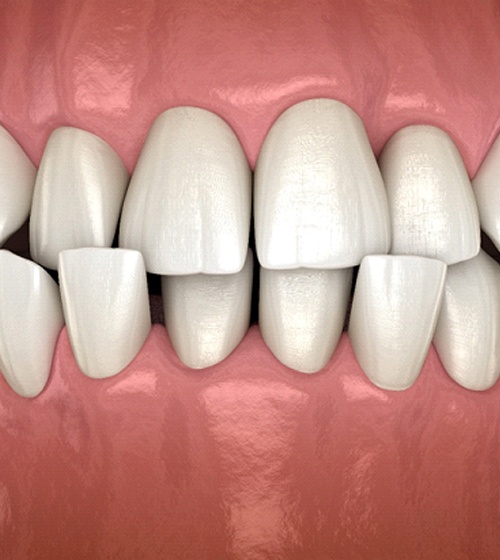
When your teeth on the upper row sit inside your lower teeth, you have what is known as a crossbite. This problem should be addressed sooner rather than later, as neglect can cause an improper bite that places increased pressure on certain areas of the mouth and causes problems with facial symmetry. With the help of orthodontics, Dr. Jones and Dr. Amerson can map out your treatment plan to ensure your teeth properly align and no longer experience severe wear and tear.
Open Bite
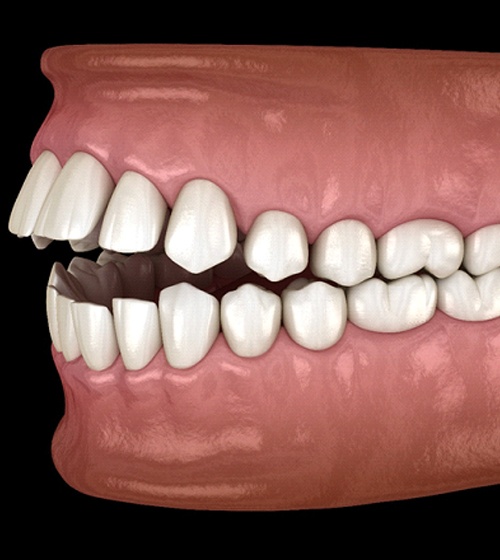
Often caused by prolonged thumb-sucking as a child or overuse of a pacifier, an open bite occurs when the back teeth touch, but the front teeth do not when you close your mouth. Should you begin to notice that your child is developing this type of orthodontic issue, it is imperative that you bring them in for early treatment. It may be possible to mitigate the problem early on and avoid more complex orthodontic care as they grow older.

